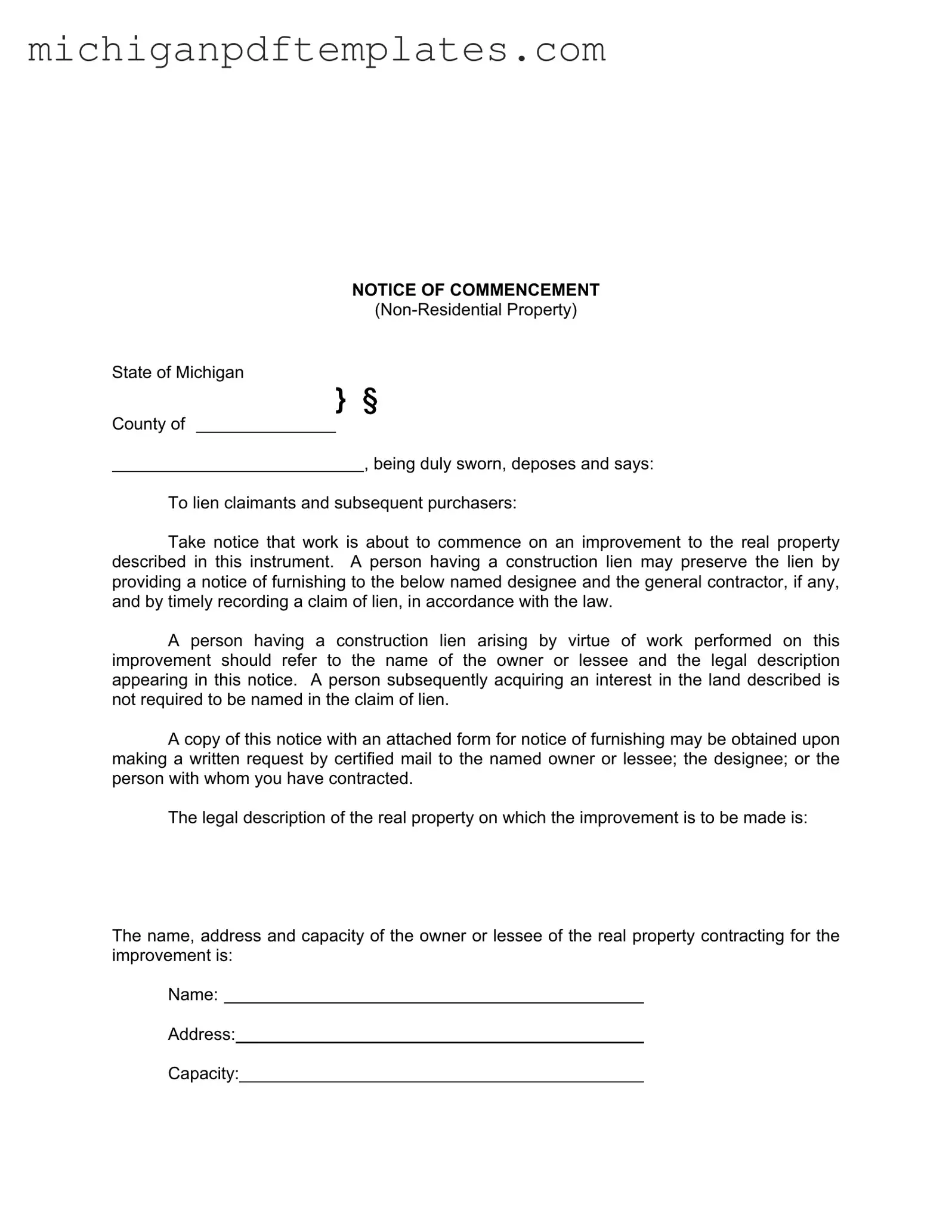The Notice Commencement Michigan form is a crucial document for anyone involved in construction projects on non-residential properties. This form serves as a formal notification that work is about to begin on an improvement to a specified real property. It outlines essential information that protects the rights of lien claimants and subsequent purchasers. By filing this notice, property owners or lessees fulfill their legal obligations, ensuring that all parties involved are aware of the impending construction. The form requires details such as the legal description of the property, the names and addresses of the owner or lessee, and any general contractors involved in the project. Additionally, it emphasizes the importance of timely communication, as lien claimants must provide a notice of furnishing to the designated parties to preserve their rights. Compliance with Michigan law mandates that this notice be recorded before any physical work begins, and a copy must be prominently displayed at the work site. The urgency of adhering to these requirements cannot be overstated, as failure to do so could jeopardize the rights of those working on the project.
